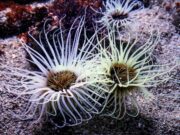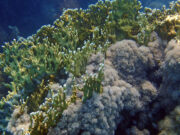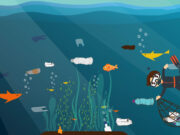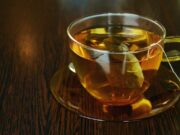Scientists have long believed soft corals, one of the many endangered elements of marine life, are only minor contributors to the structure of coral reefs. But that’s not true, says new research from Tel Aviv University.
A new in-depth analysis of reefs in the South China Sea has revealed that massive parts of the reefs are actually made from cemented microscopic skeletal elements of soft corals termed sclerites.
In the reefs of Kenting National Park, located in South Taiwan, the researchers discovered that large structures originally believed to be comprised of stony corals were actually deposits of sclerites that been cemented to each other by calcium carbonate over time. Once a soft coral colony disintegrates, the sclerites, each less than 1 millimeter in size, were thought to scatter and simply accumulate on the sea bed along with shells, sea urchin spines, and other smaller materials. But in fact, they are integral throughout the reef ecosystem and provide a home for creatures such as fish, snails, algae and many others. Not only is soft coral widespread, especially throughout the Indo-Pacific reefs, but it is also extremely rich in biodiversity. The genus Sinularia, the soft coral used in reef building, is composed of about 170 species worldwide. This is more than any stony coral genus, including 130 species of staghorn corals, the most populous.
The finding, which recently appeared in the journal Coral Reefs, challenges conventional knowledge about soft corals.
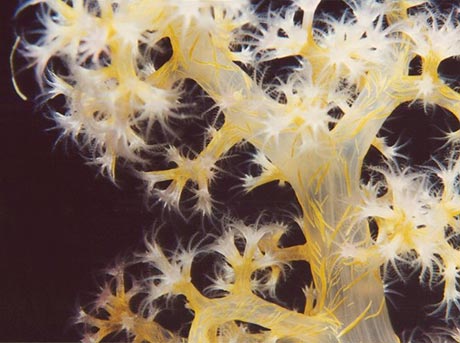
Red Sea Soft Coral, Dendronephthya hemprichi, by Tim Nicholson.
Soft corals were once considered a mere veneer of reefs, says researcher Prof. Benayahu, not unlike a living ocean carpet. Once a soft coral colony disintegrates, the sclerites, each less than 1 millimeter in size, were thought to scatter and simply accumulate on the sea bed along with shells, sea urchin spines, and other smaller materials. But in fact, they are integral throughout the reef ecosystem and provide a home for creatures such as fish, snails, algae and many others.
Not only is soft coral widespread, especially throughout the Indo-Pacific reefs, but it is also extremely rich in biodiversity. The genus Sinularia, the soft coral used in reef building, is composed of about 170 species worldwide. This is more than any stony coral genus, including 130 species of staghorn corals, the most populous.
Further Reading:
Tel Aviv University


